-
 1247 Hits
1247 Hits
-
 72.08% Score
72.08% Score
-
 2 Votes
2 Votes
|
|
Trip Report |
|---|---|
|
|
3.06659°S / 37.35466°E |
|
|
Mar 5, 2015 |
|
|
Hiking, Mountaineering |
From February 24 to March 5, 2015, our small but valorous group traveled to Tanzania and climbed to the top of Africa, the majestic Mount Kilimanjaro (5895 m).
Climbing (or Rather Hiking) Kilimanjaro on Lemosho
This trip report is about our climb through the Shira-Lemosho route. This route was chosen to shorten the total travel time. Its peculiarity was the transfer on the first day, by road, to an altitude of 3,500 m, on the Shira plateau, bypassing the forest zone. This shortened the length of time stayed in the "forest camp" by one night, instead of which we added an overnight stay in the intermediate camp of Karanga (4200 m), before the Barafu Camp.
Having arriven on the Shira Plateau, for the first day and a half we hiked horizontally, with little actual climbing.
As in Peru (Cusco), Tibet (Lhasa) or Ladakh (Leh) – the airports are at an altitude of 3500-3600 m, so we could acclimatize right away at this height. The most important site for acclimatization to Kilimanjaro is the climb at Lava Tower (4500-4600 m), on the third day of the ascent, and the further descent of 500 meters to the Barranco Camp (3950 m). This occurs two days before arrival at the Barafu Camp, located at the same height as the pass, and the body already has had time to prepare. Rest and acclimatization, undertaken in the Karanga Camp, halfway between Barranco and Barafu, gives you enough time to sleep before night climbing, to come to the camp without haste, fresh and before the main stream of hikers; which also lets you choose the best spots for tents there.
Shockingly, before our very eyes, in Barafu, a strong local whirlwind tore off tent ropes and swept away a neighboring group's lunch tent, that was standing in the open. It happened so quickly, in just a few seconds, so it was not possible to capture it on camera.
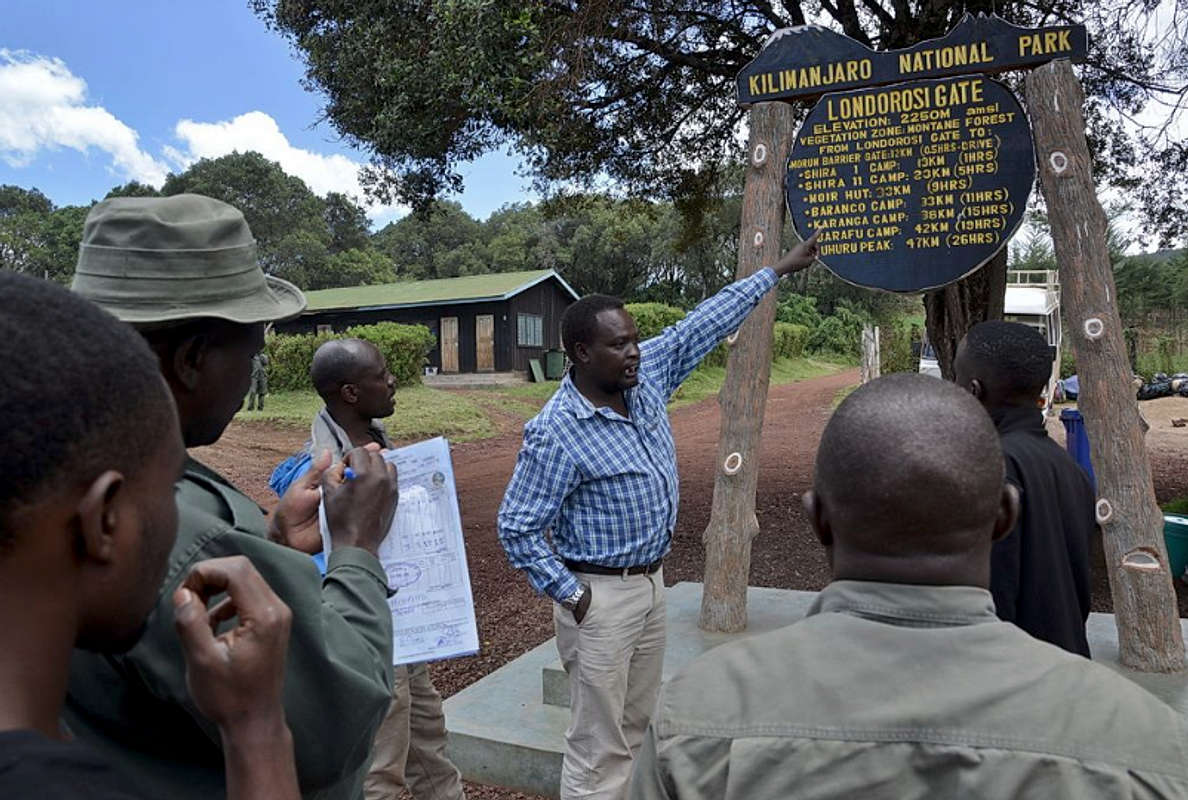
At the gates of Londorosi (2250 m), the head of the Kilimanjaro National Park Department gives an in-depth briefing to the rangers. The distance between the camps, and the duration of the transitions, from one to the other, are clearly visible on the board. From here, the dirt road leads to the beginning of the foot trail, at 3,500 m.
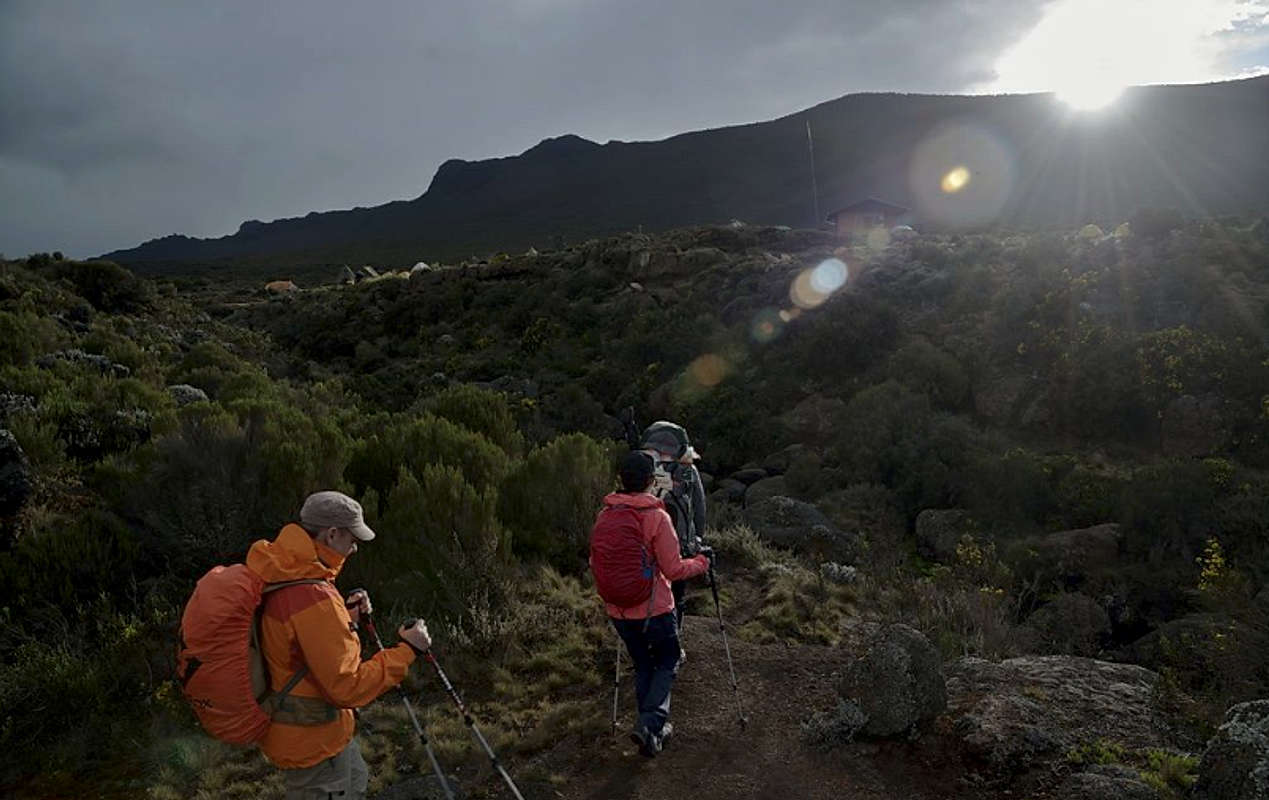
Lemosho is a relatively flat and easy Kilimanjaro climbing route overall, the first day’s hike was especially easy, as it was short and took place on a relatively flat plateau. The camp is located at a picturesque spot, between the Shira ridge and a small kloof, along which a transparent stream runs.
Kibo looks like a cake from here:
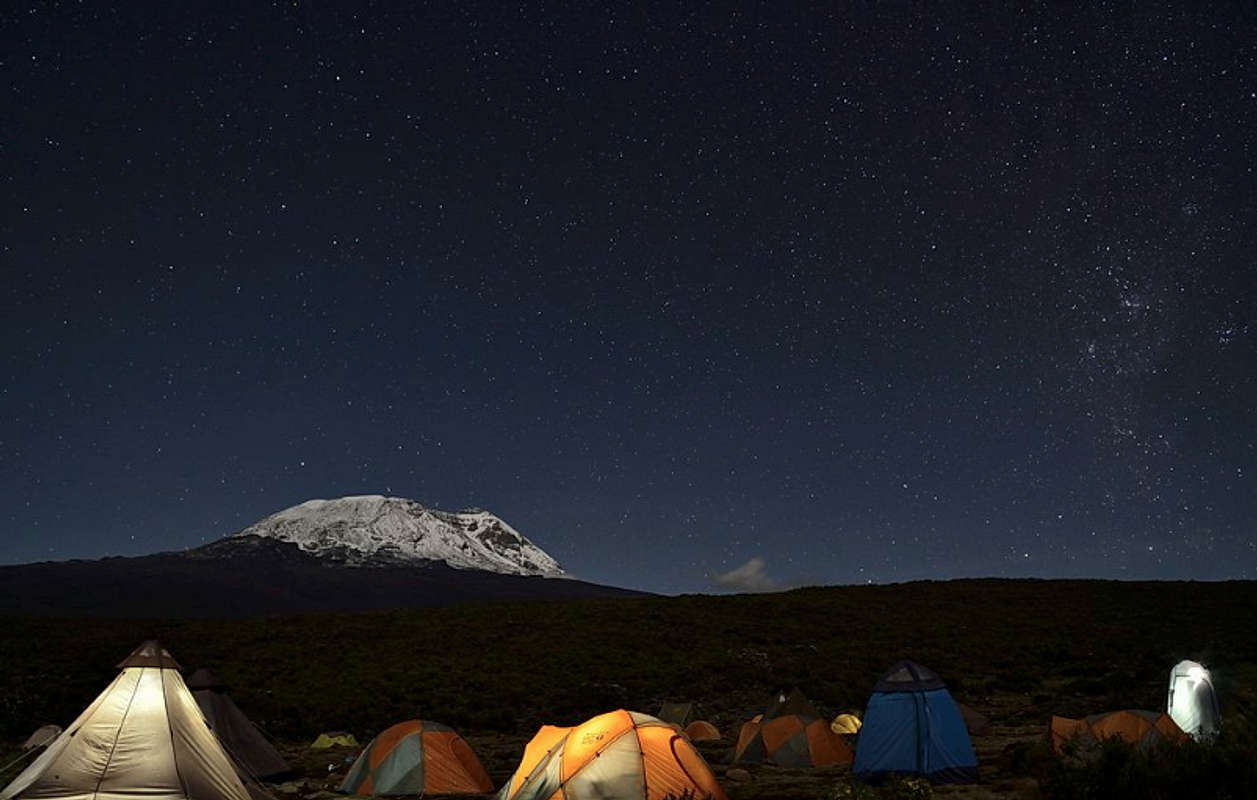
Kilimanjaro is famous for its excellent night-shooting capabilities. The stars there are near, bright, and there is no light from the big cities. Thanks to its location on the equator, one can simultaneously observe the constellations of the northern and southern hemispheres.
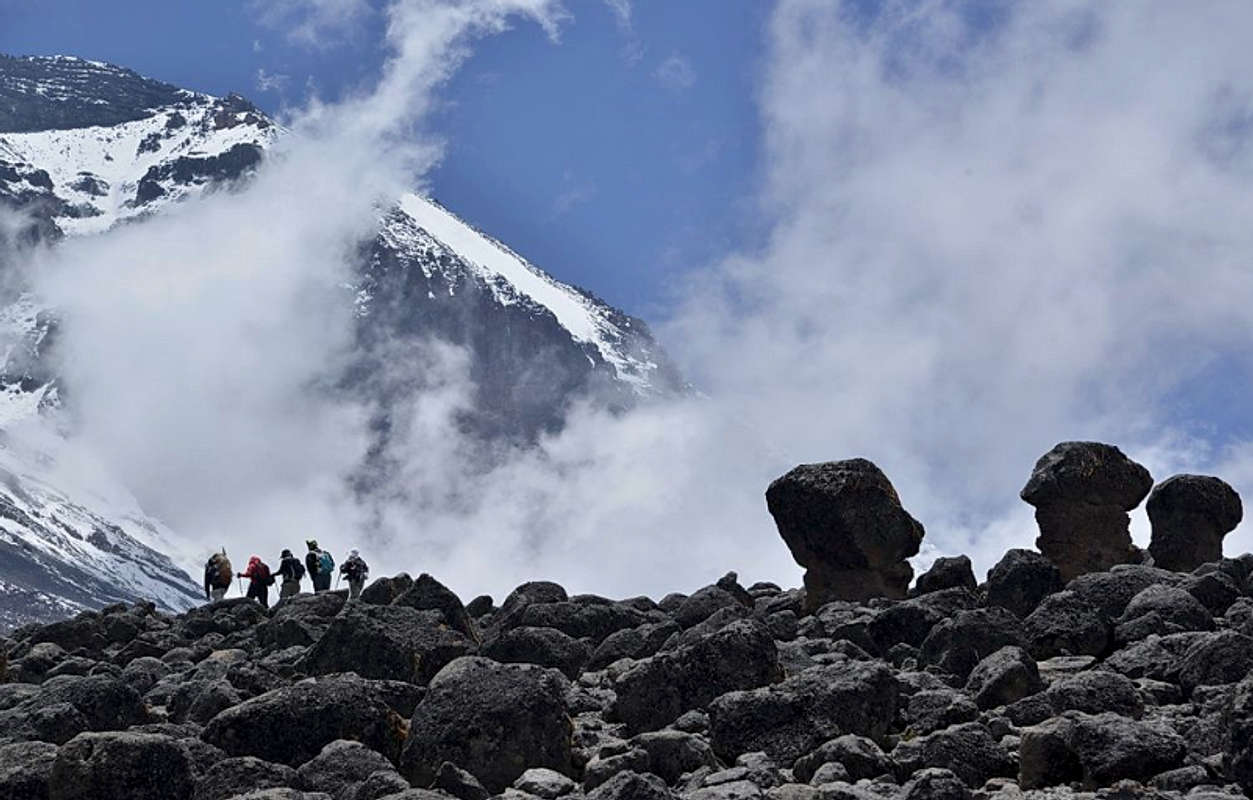
What stands out as a characteristic, is that the Big Dipper (the famous "ladle") viewed from here, appears upside down. During our ascent, the moon was a half-moon. It looked as though cloven exactly in half. This was enough to highlight Kibo's snow, but not too bright to outshine the stars. But still, if we go to Kilimanjaro by the classical routes, from the south, the Milky Way remains far away from the summit. If you want to combine them in one frame, you need to bypass Kilimanjaro from the north.
On the way to the pass, at the Lava Tower (4600 m), you cross a few old lava flows with bizarre rocks and stone "mushrooms". The dramatic backdrop for this scene is the powerful steep Kibo, gray with snow.

On the classical route to the top of Kilimanjaro, the most famous participatory "amusement" is overcoming the Barranсо Wall. From the camp of the same name, it seems steep and unapproachable, but guides and skilled climbers call it "breakfast" (as the day's transition begins immediately with it). There really are spots on the wall - just like in children’s playgrounds: blended with the height, it is quite impressive.
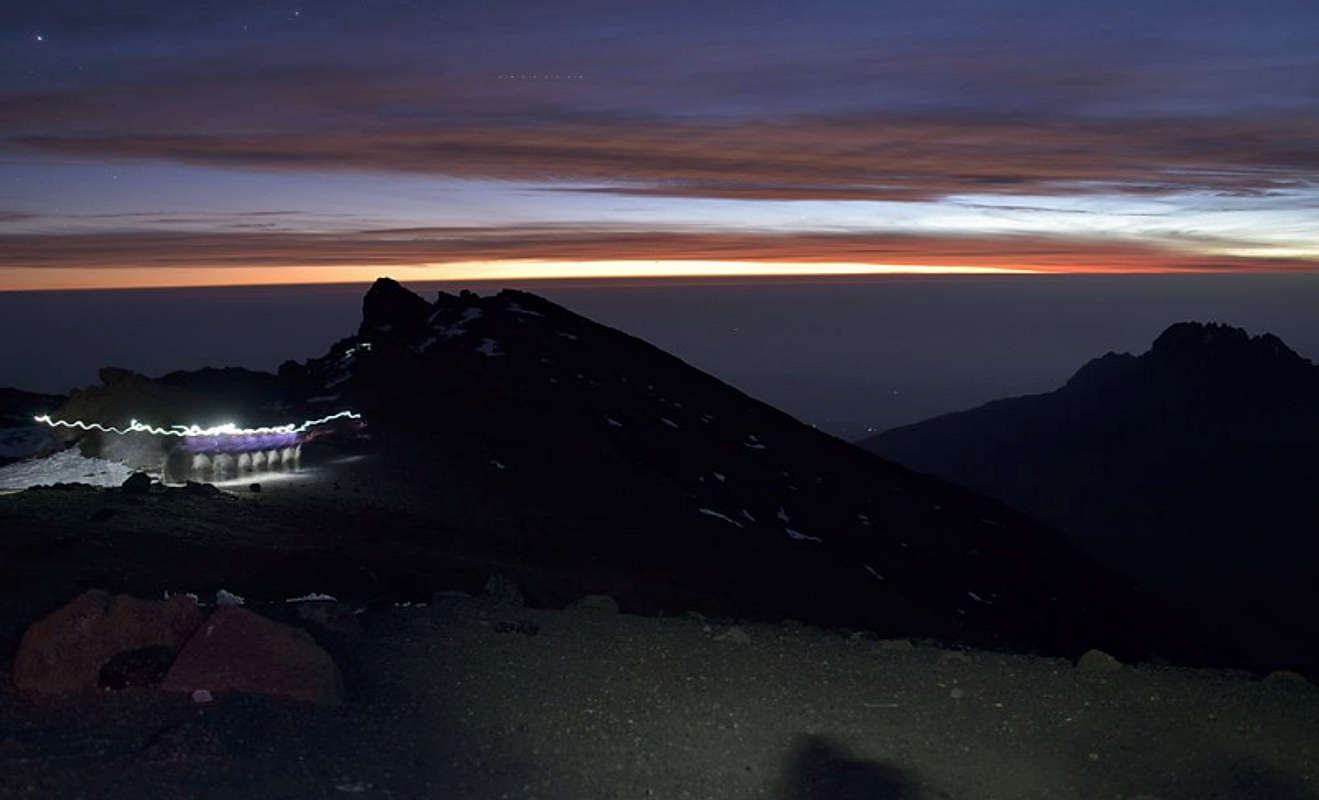
Groups that trek from the Barranco Camp to the Barafu Camp should get up and set out as early as possible, otherwise they will lose a lot of time in “traffic jams” (!) on the wall and they will have only a few hours to rest before the night climb. Happily, we did not need to hurry, as we spent the night in the intermediate Karanga Camp, and this built up our confidence too.
The night ascent was rather easy. From the experience of previous ascents, I assumed that it would take a further hour, when suddenly we jumped to the edge of the Kilimanjaro crater, near Stella Point (5756 m), in virtual darkness. This time - for the first time - I was carrying a tripod, which allowed me to take a rather impressive shot. The peak on the right is Mawenzi (5149 m).

40 minutes later, we reached the top of Kilimanjaro – Uhuru Peak (5895 m). The weather was fine, visibility was perfect, although it was quite cold, so folks at the top did not stay long. With the help of the camera, on the tripod, we managed to shoot a time-lapse of the sunrise over Kilimanjaro. Afterwards, we went on a Tanzania safari, in the Conservation Area of Ngorongoro and Arusha National Park.
Our tour was organized by Altezza Travel. I can heartily recommend them as a trusted company, with good service and high safety standards.
